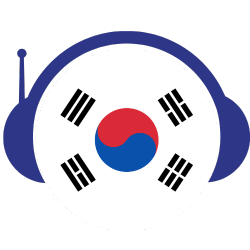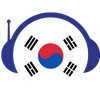Hanbok Expo
Experience the allure of hanbok, witness its evolution, and immerse yourself in its story at this year's Hanbok Expo at [[COEX]]. Join us in celebrating a piece of Korea's soul.
The much-anticipated Hanbok Expo is back at COEX in southern [[Seoul]], marking its sixth year of showcasing the elegance and evolving trends of traditional Korean clothing. Starting this week, the event is a collaborative effort between the Korea Craft and Design Foundation (KCDF) and the Ministry of Culture, Sports and Tourism, and will stretch over four exhilarating days.
Bringing together a dynamic mix of 108 hanbok designers and manufacturers, visitors can expect a wide range of creations. Whether you're on the hunt for modernized versions, chic accessories, or even pet outfits, there's something for everyone. And if you're looking for a deal, some pieces are available at discounts reaching up to 80 percent.
The expo isn't just about shopping, though. It's a cultural immersion. At the heart of the event is the central exhibition, guided by renowned fashion designer Suh Young-hee. Named "The Wings of Dance," it vibrantly showcases 22 traditional dancewear pieces, embodying the spirit of "heung," a Korean expression for exuberant joy and energy. These captivating costumes draw inspiration from historical dance forms such as "talchum" (mask dance), "geommu" (sword dance), "seungmu" (monk's dance), and "[[pungmulnori]]" (a delightful blend of dance and playful folk music).
Additionally, attendees have the chance to view an exclusive selection from this year's Hanbok Design Project Contest, revealing both the winners and intriguing adaptations of hanbok for casual office wear and school uniforms.
For those keen to dive deeper, there's the opportunity to craft your own hanbok-inspired accessories or even slip into these traditional attires for a memorable photo op.
And here's a tip for attendees: if you show up donning a hanbok, your entrance is on the house! Otherwise, tickets are available for 5,000 won ($3.80).
The Beauty and Legacy of Hanbok
Hanbok, with its graceful lines and vibrant colors, is more than just clothing; it's a testament to Korea's rich cultural heritage. Worn for centuries, this traditional attire is symbolic of Korean identity and pride.
Historically, hanbok was worn daily but has since evolved into attire for special occasions such as festivals, ceremonies, and celebrations. It boasts a simplistic yet distinct style: women typically wear a full skirt (chima) and jacket (jeogori) while men don a jacket paired with loose-fitting pants (baji). The beauty of hanbok lies in its harmonious color combinations, the fluidity of fabric, and the balance between its structured top and voluminous bottom.
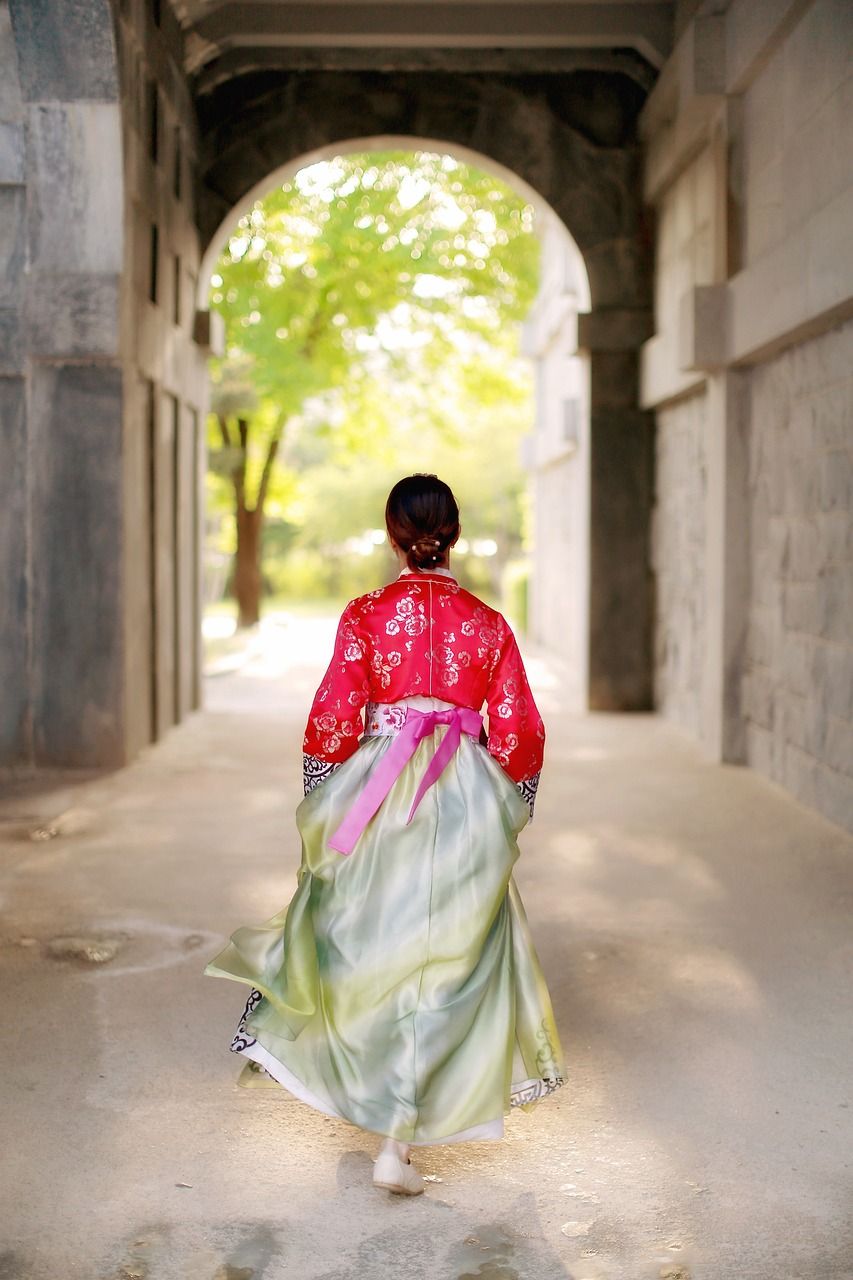
Hanbok has also been a constant at various Korean ceremonies. From birthdays to weddings, it's an embodiment of respect, grace, and tradition. Events like the first birthday celebration (doljanchi) or the Lunar New Year ([[Seollal]]) are incomplete without the presence of this iconic attire.
As we look ahead, the future of hanbok seems promising. With contemporary designers blending tradition with modern aesthetics, a resurgence of interest among the younger generation, and its presence on global fashion stages, hanbok continues to evolve while retaining its timeless elegance.
Hanbok, the traditional Korean attire, is not just a piece of clothing but a canvas that narrates stories, conveys emotions, and represents societal positions, personal milestones, and cultural values. A striking feature of the hanbok is its vibrant colors and intricate patterns. Each hue and motif carries its own significance, deeply rooted in Korean history, philosophy, and the surrounding nature.
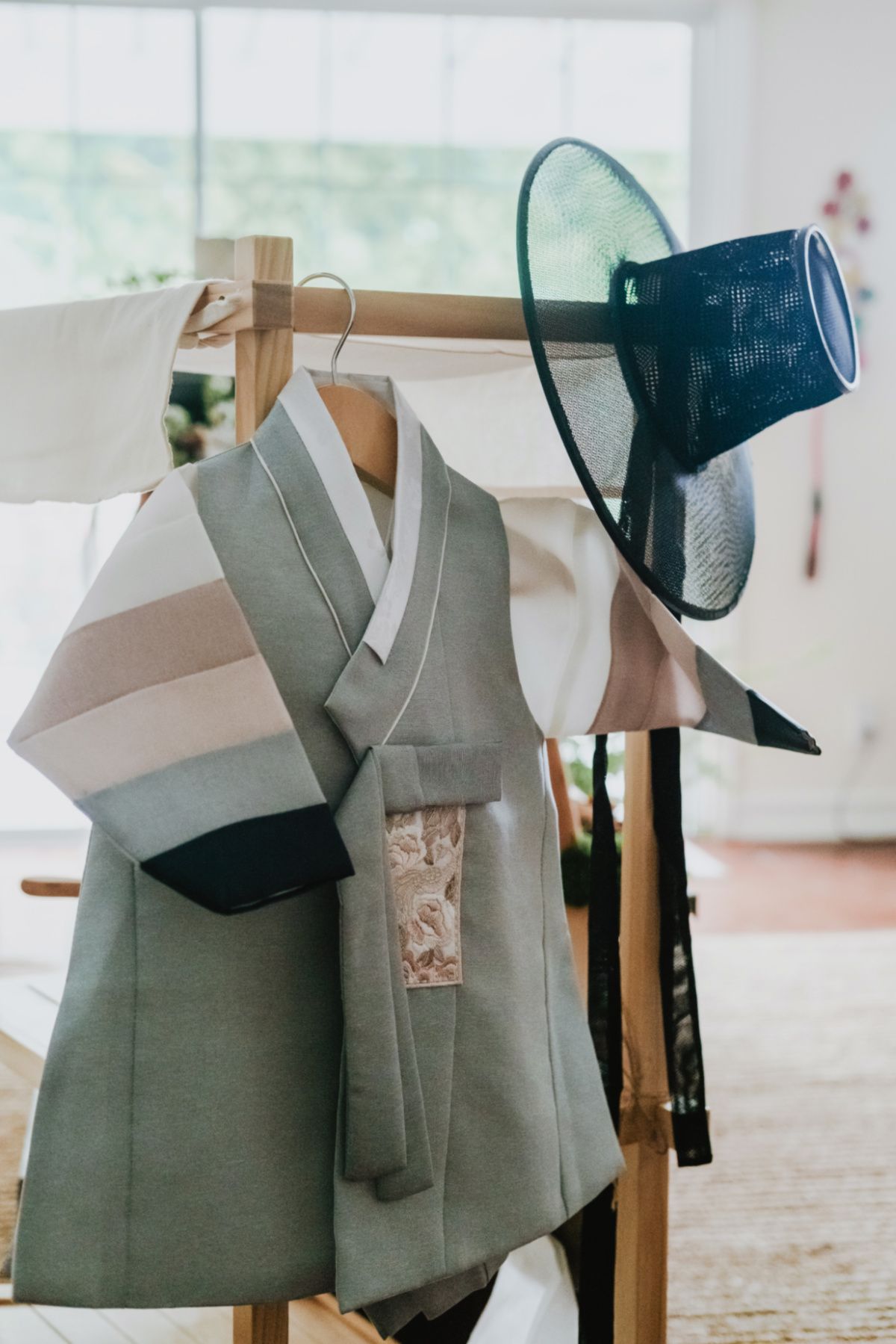
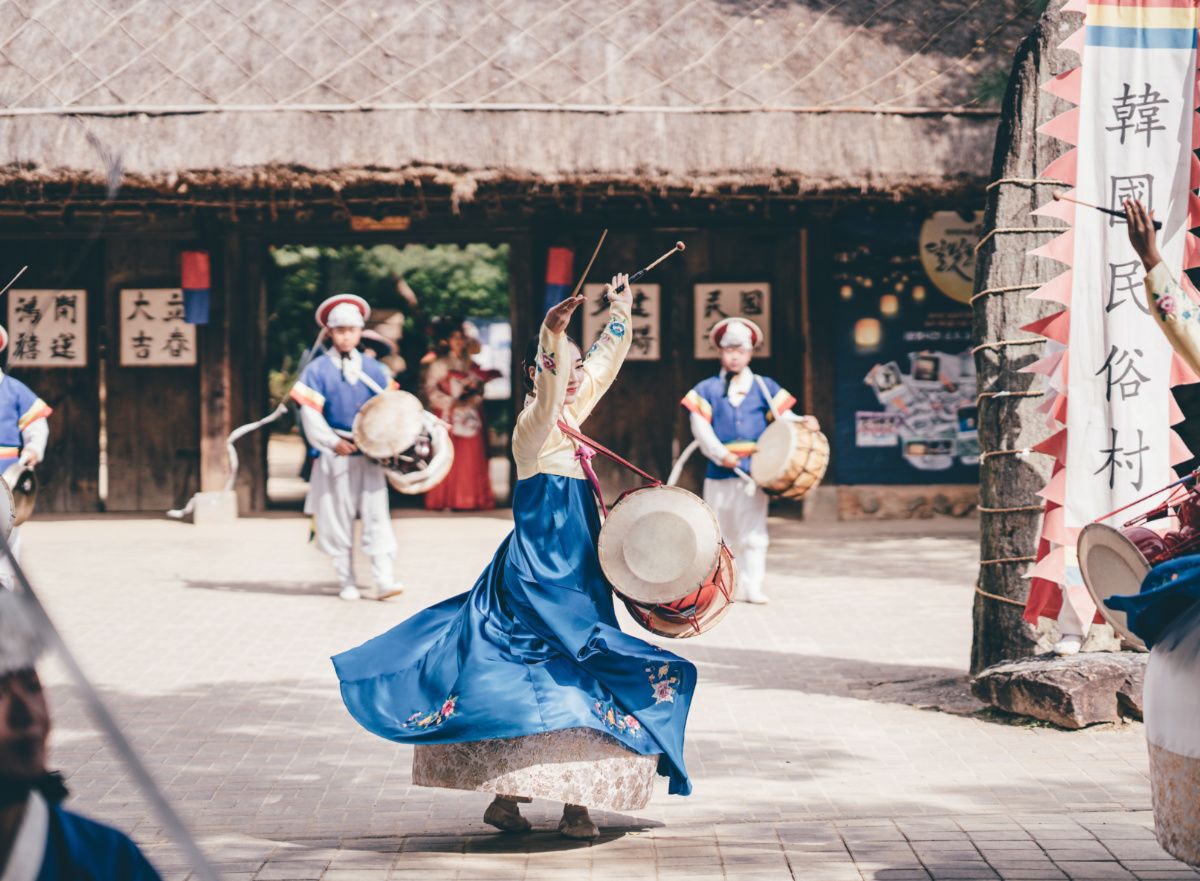
Colors of Hanbok:
The colors used in hanbok can be traced back to the ancient Korean philosophy of "[[Obangsaek]]," which represents the Five Cardinal Colors: blue, red, yellow, white, and black. These colors, individually and collectively, correspond to various directional, elemental, and cyclical energies.
- Blue (East / Wood / Spring): Symbolizes birth and renewal. It's often seen in hanboks meant for young individuals or for celebratory occasions like the first birthday.
- Red (South / Fire / Summer): A vibrant color that stands for protection, passion, and good fortune. Brides often have elements of red in their wedding hanboks.
- Yellow (Center / Earth): Represents humanity and neutrality. In ancient times, yellow was also reserved for royalty, but with variations in shade.
- White (West / Metal / Autumn): Denotes purity, innocence, and peace. It was (and still is) a common color for everyday hanbok among commoners.
- Black (North / Water / Winter): Associated with the unknown, maturity, and knowledge. Elders might wear darker shades symbolizing their accumulated wisdom.
Historically, the choice of color also indicated social status. Royalty and aristocrats wore bright, vibrant colors, while commoners mostly wore pale or undyed hanboks.
Patterns on Hanbok:
The patterns and embroideries on hanbok are equally evocative, drawing inspiration from nature, beliefs, and daily life.
- Floral Motifs: Commonly found on women's hanbok, flowers like peonies (wealth), lotus (purity and rebirth), and chrysanthemums (longevity) are popular.
- Animal Designs: Creatures such as the dragon (royal power), phoenix (peace), butterfly (joy and prosperity), and tiger (courage and protection) are embroidered onto hanboks, each carrying its symbolism.
- Celestial Bodies: The sun represents the yang principle, or positive energy, while the moon signifies the yin principle, or negative energy. Together, they denote harmony and balance.
- Geometric Patterns: These can range from simple repeated shapes like squares and diamonds to more intricate designs. They add an aesthetic appeal and are usually devoid of the deep symbolism that nature-inspired patterns carry.
- Buddhist Symbols: Though less common, some hanboks, especially those worn by Buddhist monks or for religious ceremonies, might carry symbols representing Buddhist teachings.
The colors and patterns of the hanbok are a vibrant reflection of Korea's cultural mosaic, combining centuries-old beliefs, appreciation for nature, and societal norms. When one sees a hanbok, it's not just a piece of clothing they observe, but a deeply symbolic representation of Korean heritage and philosophy.
Embracing the exquisite artistry, rich history, and vibrant traditions of the hanbok awaits you at this year's Hanbok Expo at COEX. Don't miss the opportunity to immerse yourself in the captivating world of Korean culture and fashion. Whether you're a devoted hanbok enthusiast or a curious newcomer, there's a world of discovery awaiting. Join us in celebrating Korea's sartorial elegance and timeless heritage. See you at COEX!
